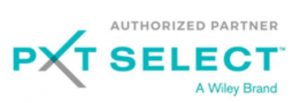 No one is born a leader—leadership skills are built over time as a result of experience, practice, commitment and then mastery. When we attain a leadership position within our company, it’s important that we have already learned how to work with and through others to get the job done on time and within budget. Now it’s time to take those basic skills and hone them. At every level of leadership comes a new level of responsibility and opportunity. Are you ready to build on those skills to successfully support yourself and the people you lead?
No one is born a leader—leadership skills are built over time as a result of experience, practice, commitment and then mastery. When we attain a leadership position within our company, it’s important that we have already learned how to work with and through others to get the job done on time and within budget. Now it’s time to take those basic skills and hone them. At every level of leadership comes a new level of responsibility and opportunity. Are you ready to build on those skills to successfully support yourself and the people you lead?
7 Keys to Being a Leader Who Leads
Engage Others. Forcing others due to your job title, manipulating outcomes or attempting to out-talk your team will not support your efforts to manage effectively. Once your team and others within the company are upset with you, it becomes harder to get them to perform at their best, listen to your ideas and work with you. Acknowledge their great ideas and efforts, and work with them by rolling up your sleeves to produce intended outcomes in a win-win-win manner.
Integrity Is Key. Good people don’t like to work for someone who cuts corners and overlooks important details. Making decisions based upon how you feel rarely works out well either. Learn how to brainstorm for solutions, work through legal and financial considerations, and set up true strategies. Remember, the best solutions may not follow the easiest and fastest pathways. When a mistake is made, own it, apologize and clean it up! It sets a great example for others.
Listen for New Possibilities in ALL Ideas. Being a leader who actually leads means you have really great listening skills. You’ve put down your electronic gadgets and are hearing the spoken words and unspoken messages that are being conveyed. You are able to ask the right questions to elicit the best from others and build on their ideas—no matter how off-the-wall they may initially seem. You become a leader whom others enjoy working with to create solutions.
Respect Others. Your job isn’t to be a critical parent, particularly when some of the people you may be managing are older than you and have lots of great work experience and ideas. Learn to pick everybody’s brains and rely on them to get the job done without micromanaging. Stay aware of the results your employees produce. Acknowledge any progress made, no matter how small. Respect will build an effective team.
Keep Your Skills Sharp. Take management courses to clean out any cobwebs that impede your ability to work effectively with others—it will keep you sharp. Remember, the higher up in the corporate world you climb, the more your people skills will matter (even more than your technical knowledge). Those same skills make being a leader a lot easier too.
Take Care of Yourself. While it’s critical that you take care of your employees and ensure they have the resources they need to get their jobs done, it’s equally important that you take care of yourself. Schedule time to spend with your family and friends having fun! Get involved in activities outside of work that you enjoy (e.g., golf, reading, travel, volunteering, etc.). A happy leader is more likely to have happy and productive employees.
Great Leaders Have Coaches. Don’t be afraid to hire an executive coach to help you navigate the challenges you will inevitably face. The right one will help you make better and timely decisions. Plus, having a coach will help you understand how to be a leader others want to follow!
Being a leader who actually leads comes with a new level of responsibility to others. Review the seven keys. Now ask yourself … are you ready?
©Jeannette Seibly, 2017
Are you experiencing challenges that are causing sleepless nights? Is your team avoiding eye contact with you? Are you avoiding anyone on your team? Now is the time to talk while there is time to turn this around quickly. Contact Jeannette for a free confidential conversation at http://SeibCo.com/contact/.
Jeannette Seibly has been a business advisor and executive coach for over 24 years; along the way she’s guided the creation of three millionaires. She is laser sharp at identifying the leverage points that will take a business and its team to the next level of performance and success. Check out her website, http://SeibCo.com, or contact Jeannette for a free, confidential conversation at http://SeibCo.com/contact.

 Ask yourself: The last time you made a mistake, did you try to bury it or openly learn from it?
Ask yourself: The last time you made a mistake, did you try to bury it or openly learn from it? “A coach has you do what you don’t want to do so you can be successful!” Jeannette Seibly
“A coach has you do what you don’t want to do so you can be successful!” Jeannette Seibly
 An administrative assistant hated her new boss—a woman who was her age but made a lot more money than she did. The assistant’s husband suggested she learn from her new boss instead of hating her. With his coaching and her boss’s ability to manage with laser-like effectiveness, the assistant was given a project that she excelled at. The boss (and her husband) congratulated her on a job well done. With this newfound confidence, she enrolled in college courses, was promoted within her company and eventually became the manager of the department. All it took was creating the right career path instead of relying on the normal trial and error used by many bosses to develop good employees into great ones.
An administrative assistant hated her new boss—a woman who was her age but made a lot more money than she did. The assistant’s husband suggested she learn from her new boss instead of hating her. With his coaching and her boss’s ability to manage with laser-like effectiveness, the assistant was given a project that she excelled at. The boss (and her husband) congratulated her on a job well done. With this newfound confidence, she enrolled in college courses, was promoted within her company and eventually became the manager of the department. All it took was creating the right career path instead of relying on the normal trial and error used by many bosses to develop good employees into great ones.  My goal is to provide products and services that build sustainable growth for your company.
My goal is to provide products and services that build sustainable growth for your company. Effective leadership requires we balance everyone’s wants and needs. Working with customers (meeting their deadlines, concerns about quality, and sometimes, unrealistic demands), along with the expectations from your team, boss, and board, can create a lot of pressure to make everyone happy. Effective leadership does not need to be stressful when you manage with clarity.
Effective leadership requires we balance everyone’s wants and needs. Working with customers (meeting their deadlines, concerns about quality, and sometimes, unrealistic demands), along with the expectations from your team, boss, and board, can create a lot of pressure to make everyone happy. Effective leadership does not need to be stressful when you manage with clarity.


